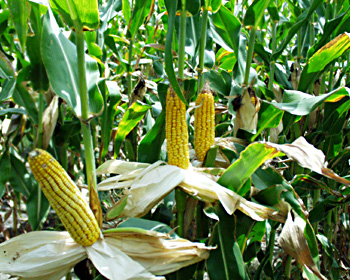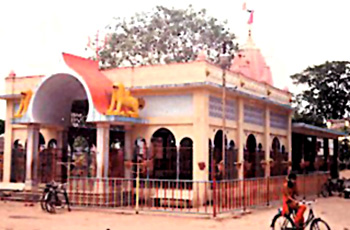 Ratlam district is one of the well-known districts of Madhya Pradesh which is situated in the North-West of the state. The new town of Ratlam was founded by Captain Borthwick in the year 1829 with regular and broadened streets and well-built houses. Ratlam was once one of the first commercial centres in Central India being the centre of an extensive trade in opium, tobacco and salt. It was also famous in Malwa for its bargains called Sattas. Before the opening of the Railway Line to Kahndwa in the year 1872, there was no better mart than Ratlam.
Ratlam district is one of the well-known districts of Madhya Pradesh which is situated in the North-West of the state. The new town of Ratlam was founded by Captain Borthwick in the year 1829 with regular and broadened streets and well-built houses. Ratlam was once one of the first commercial centres in Central India being the centre of an extensive trade in opium, tobacco and salt. It was also famous in Malwa for its bargains called Sattas. Before the opening of the Railway Line to Kahndwa in the year 1872, there was no better mart than Ratlam.
History of Ratlam District
The District of Ratlam in Madhya Pradesh was formed in the month of June 1948, and was reorganized in the month of January 1949. It covers the area of the former princely State of Ratlam, Piploda, Jaora, Sailana, Alot tehsil of Dewas Junior, Ringnod tehsil of Dewas Senior and some parts of Mandsaur tehsil of Gwalior State, a few villages of Dhar State and Chief Commissioners` provinces of Pant Piploda. The district of Ratlam is known after the Headquarters town, Ratlam which was also the headquarters of Princely State of Ratlam.
Geography of Ratlam District
Ratlam is situated in the Northwestern region of Madhya Pradesh state between 23 degrees 5 minutes and 23 degrees 52 minutes to the North Longitudes and 74 degrees 31 minutes and 75 degrees 41 minutes to the East Latitudes. This district is bounded by the Mandsaur district to the North, Jhabua and Dhar to the South, Ujjain to the East, Chhitorgarh district and Banswara district of Rajasthan to the West, Shajapur district of Madhya Pradesh and Jhalawar district of Rajasthan to the North. The average temperature of Ratlam is 55 degrees Fahrenheit. The average rainfall received by this district is 90 centimeters. Most of the rain occurs in the months of July and August. Main crop of Ratlam include Soyabin, Gram, Wheat and Maize. It is also known for Strawberry and Grapes. Important grain crops are Jowar, Maize and Wheat and the important pulses are Chana and Urad.
 Administration of Ratlam District
Administration of Ratlam District
The district collector is the head of the district administration. The collector is aided by the subordinate officers in the general work of administration. Total area of the district of Ratlam is 4861 square kilometres which is 1.11 percent of the entire state of Madhya Pradesh. For convenience in the work of administration, the Ratlam district is divided into 6 tehsils and 6 blocks. The 6 tehsils are Alot, Piploda, Sailana, Jaora, Ratlam and Bajna.
Economy of Ratlam District
Ratlam has a number of chemical factories namely JVL, IPCA, Shaba Chemicals, Hightech, Bordiya Chemicals, Sujjan Chemicals etc. There are a number of manufacturing units of Copper wires and plastic rope etc. Ratlam is also famous for its gold and ornaments for its purity and designs.
Tourism of Ratlam District
The district of Ratlam has a number of beautiful temples such as Kalka Mata near the district Collectorate. Cactus Garden is famous for its different varieties of Cactus. The Nageshwar Temple at A lot and the Hussain Tekri at Jaora are well-known tourist destinations. Bilpakeshwara temple at Bilpank is located at a distance of 18 kilometers to the Southwest from Ratlam. This temple is constructed in Gurjara-Chalukyan style of architecture, a contemporary style of the Paramara temple architecture.
Shiva temple at Jhar in the district of Ratlam is one of the most prominent places of pilgrimage. A number of other temples in Ratlam are Veerupaksh Mahadev temple, Dharola Mahadev temple, Ayana Mahadev temple, Kedareshwar temple, Mahalaxmi temple, Kalikamata temple, Garkhankhai temple, Shipawra temple, Amarji temple, Barbad Hanuman temple, etc. Other places of tourist interest in this district are Dholawad Dam, Hussain Tekri Jaora, Andikalpeshwar temple, Kharmore Bird Sanctuary, Cactus Garden at Sailana, Sagod Jain temple, Ganga Sagar, etc.






